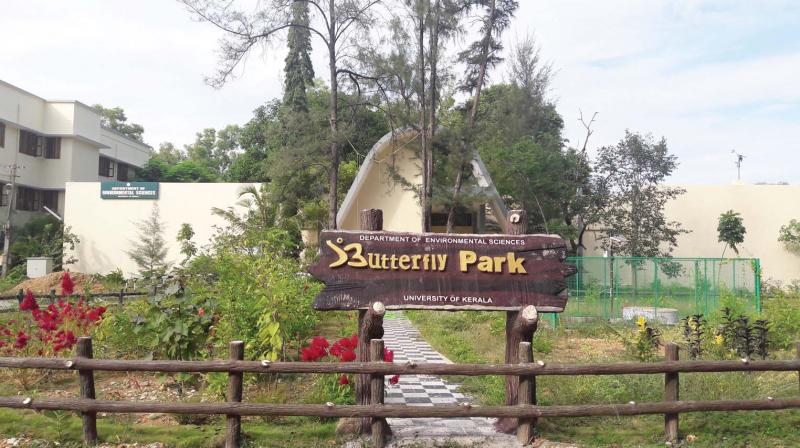Butterflies whisper on Kerala University campus
More than 330 species of butterflies have been reported from Kerala, of which 37 species are endemic to the Western Ghats.

THIRUVANANTHAPURAM: Drop in at the Butterfly Garden of Kerala University campus to listen to the whispered conversations between the fluttering beauties and the flowers swaying in the gentle breeze.
The garden aims to conserve the local butterfly fauna and is an initiative of the department of environmental science to create awareness on biodiversity conservation and expose the wonders of nature to the public.
The garden, first of its kind on a university campus, has been funded by the University of Kerala to recreate the lost habitats of butterflies. The department has developed an oval-shaped garden with a perimeter of 70 feet which is protected with eco- friendly bamboo fencing. An environment-friendly habitat is created for the proper growth and development of butterflies.
More than 330 species of butterflies have been reported from Kerala, of which 37 species are endemic to the Western Ghats.
Butterflies usually have a short lifespan which happens through four distinct stages of metamorphosis; egg, larva ( caterpillar), pupa and adult. These stages develop within two-three weeks.
"As construction activities flourish in their ecosystems, many species of butterflies have vanished from earth. An immediate effort is required to conserve the endangered and endemic species. We are trying to conserve them by providing an artificially created natural habitat for the existing endangered species," said Dr. Sabu Joseph, HoD, Department of Environmental Science and the coordinator of the butterfly garden.
Appropriate host plants preferred by the butterflies for egg-laying and nectar-providing colourful fragrant flowers, shade, dampness, puddle for water and nutrients and an open sunny area for basking are provided. Over 900 host plants of about 80 species have been planted, including nerium oleander, aegle marmelos, carissa carandas and various nectar-bearing species like cuphea, marigold, crotoleria and lantana.
A 'butterfly exhibit area' for observing the activities of butterflies at close range and 'butterfly living area' to enhance their colonisation and breeding are the major attractions of the garden.
A weather station kept in the middle of the garden measures daily air temperature, humidity, soil moisture, wind direction and the velocity of wind.
About 30 species of butterflies visit the garden at different stages of their life, including common mime, common tiger, rustic, common castor, common albatross and common Indian crow.

